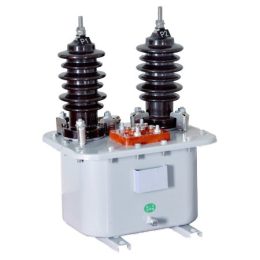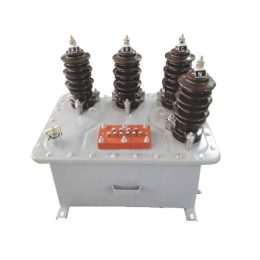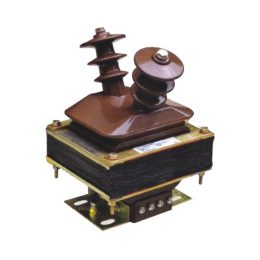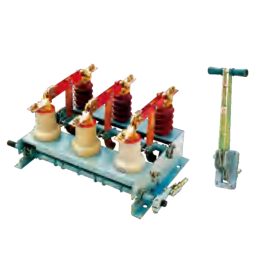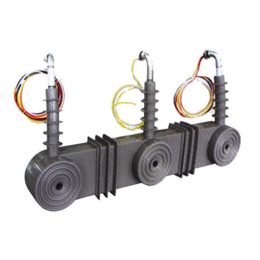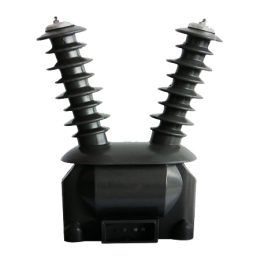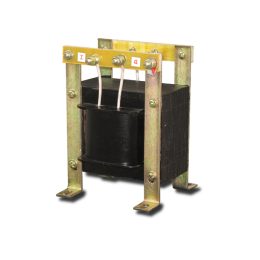Single-Phase Voltage Transformers Role, Function, and Importance in Power Systems
What is a Single-Phase Voltage Transformer?
A single-phase voltage transformer is a specialized electrical device used in power systems to transform voltage levels. It comprises key components like the core, primary winding, secondary winding, and a molded casing that encases these elements. Additional parts include a terminal box, an elbow-shaped terminal block, and a conductive rod. The primary winding connects to the terminal box and the conductive rod, while the secondary winding links to the terminal box terminals. These components are integrated into a single structure, with the core formed by two C-shaped sections joined to create a rectangular shape.
How Does a Voltage Transformer Work?
Voltage transformers (VTs) are designed to transform voltage levels in electrical systems, but they differ from standard transformers in purpose and capacity:
- Standard Transformers: These are primarily used for transmitting electrical energy and operate at large capacities measured in kilovolt-amperes (kVA) or megavolt-amperes (MVA).
- Voltage Transformers: These are intended to supply power to measuring instruments and protection devices. They measure line voltage, power, and energy while protecting equipment like motors and transformers from damage during line faults. Unlike standard transformers, VTs have smaller capacities, typically ranging from a few volt-amperes (VA) to a maximum of 1 kVA.
Why is Voltage Transformation Necessary?
In power systems, voltage levels vary significantly depending on the requirements of generation, transmission, and consumption. Voltages can range from low levels like 220V or 380V to extremely high levels of tens of thousands of volts. Measuring these high and low voltages directly is not only impractical but also unsafe.
By integrating voltage transformers into the circuit, these varying voltages can be converted into standardized low-voltage outputs, such as 100V. This allows engineers to use standardized measuring instruments and protective relays, eliminating the need for custom high-voltage devices. VTs make it safer and more efficient to monitor and measure voltages in power systems.
The Role of Voltage Transformers in Power Systems
Voltage transformers serve as a critical link between the high-voltage primary system and the low-voltage secondary system. They ensure the safe and accurate transformation of high voltages into low, measurable levels. Key roles of VTs include:
- Measurement and Monitoring: VTs enable the accurate measurement of line voltage, power, and energy by stepping down high voltages to safe, standardized levels.
- Protection: VTs supply power to protective relays, which safeguard expensive equipment like motors and transformers from damage during faults.
- Operational Insights: By reflecting the operational status of electrical equipment, VTs help identify both normal and fault conditions in the system.
The primary winding of a VT is connected in parallel to the high-voltage circuit, stepping down the voltage to a standard low-voltage output, such as 100V. This output is then used by measuring instruments and protection devices. Importantly, the VT’s secondary winding typically operates in an open-circuit state under normal conditions. Any short circuit on the secondary side is hazardous and can damage the transformer and connected systems.
Why Single-Phase Voltage Transformers are Indispensable
Single-phase voltage transformers are essential in modern power systems for several reasons:
- Safety: They provide a safe way to measure high voltages without the need for dangerous high-voltage instruments.
- Standardization: By converting various high and low line voltages into a single standardized voltage, VTs simplify the design and use of measuring instruments.
- Reliability: They ensure accurate monitoring and protection of electrical systems, enhancing the overall safety and efficiency of power networks.
Conclusion
Single-phase voltage transformers play a crucial role in power systems by transforming high and low voltages into safe, measurable levels. They enable precise measurement, protect valuable equipment, and improve operational safety in electrical networks. Investing in high-quality voltage transformers ensures the reliability and efficiency of power systems, making them an indispensable component in modern electricity infrastructure.
- Magnetic Saturation in 20kV Voltage Transformers and Its Adverse Effects
- Working Principle of Zero-Sequence Current Transformers
- Common Fault Handling for Current and Voltage Transformers
- Instrument Transformer Fault Handling: A Technical Guide
- Causes of 35KV Current Transformer Damage
- Analysis and Troubleshooting of Common Issues with Current Transformers
